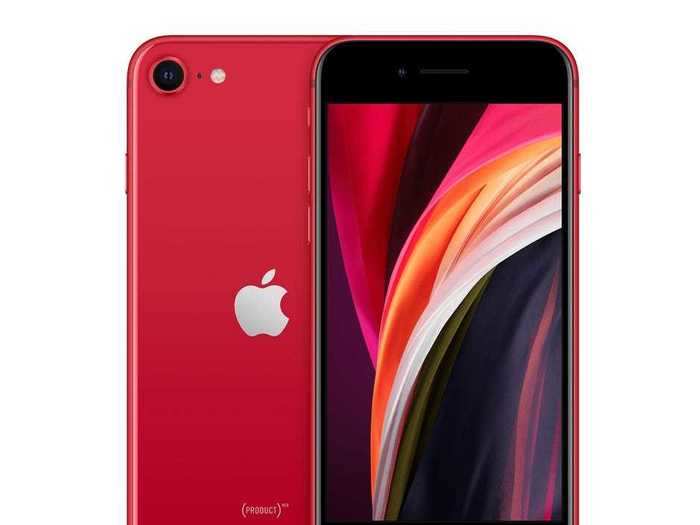
Apple's new $400 iPhone SE may not look new at all to longtime iPhone owners, but it does come with some important changes compared to the nearly 4-year-old iPhone 7.
Both the iPhone SE and iPhone 7 have a 4.7-inch screen with a home button underneath it, Touch ID, a 12-megapixel camera, a water-resistant design, and similar battery life.
If you're wondering whether the iPhone SE is worth the upgrade, there are a few things you should consider if you own an iPhone 7. There are more differences between the two phones than you might think, but only a few of them will probably have a meaningful impact on your daily usage.
The biggest changes include:
Otherwise, not much has changed other than the available color options and the addition of wireless charging support.
Here's a closer look at the biggest differences between the iPhone SE and iPhone 7.
Read the original article on Business Insider
If you're upgrading from the iPhone 7, the iPhone SE probably won't feel like too much of a difference other than its faster performance and Portrait Mode camera. You'll have to decide if those two improvements (along with the additional storage) are worth a $400 upgrade.
If you have an iPhone 7 that's starting to feel a bit slow, are willing to spend a bit more, and don't necessarily care about having the latest iPhone, the $600 iPhone XR might be also be worth considering.
It has an older processor compared to the SE (it runs on Apple's A12 Bionic instead of the A13 Bionic) that should still feel faster compared to the iPhone 7, offers a larger 6.1-inch borderless screen compared to the 4.7-inch iPhone SE, has Face ID, and longer battery life.


Apple brought wireless charging to the iPhone in 2017 with the iPhone 8, 8 Plus and X, one year after it introduced the iPhone 7.

The iPhone SE is available in black, white, and red, while the iPhone 7 came in black, silver, gold and rose gold.
The design is also slightly different; the iPhone SE has the glass and aluminum design of the iPhone 8, whereas the iPhone 7 has an aluminum finish.

The entry-level iPhone SE comes with 64GB of storage space, which is double the 32GB that the cheapest iPhone 7 came in.
So if you bought the least expensive version of the iPhone 7 when it launched in 2016, you can expect to get twice the onboard storage if you buy the $400 iPhone SE.


Portrait Mode debuted with the iPhone 7 Plus in 2016, but it's only available on the larger model. The regular 4.7-inch iPhone 7 doesn't support Portrait Mode.
The iPhone SE not only supports Portrait Mode, but also includes all six of the lighting effects Apple has added.
There are also a few other subtle differences when it comes to the camera:

Both phones have a single lens 12-megapixel camera with an aperture of f/1.8. (The larger iPhone 7 Plus has a dual-lens camera).
They're also both capable of zooming digitally up to five times and support optical image stabilization, which should prevent any blur from shaky hands.

The iPhone SE has Apple's True Tone technology, which enables the screen color temperature to adapt to the light in your surroundings. This makes the display look warmer and strips away that blue-ish hue common on electronics' screens.
The iPhone 7's display lacks this feature.
The iPhone SE's display also supports Haptic Touch while the iPhone 7 has 3D Touch. They're essentially two different technologies that offer similar functionality. Haptic Touch is the feature that lets you launch certain app shortcuts, like pressing and holding an app icon on the home screen to quickly launch a certain action within that app.
3D Touch is the older iteration of that feature that requires you to apply a little bit of extra pressure to launch that sub-menu.

Both phones have a 4.7-inch LCD screen with a 1334 by 750 resolution that packs 326 pixels per inch. Their screens are also equally bright. (The larger iPhone 7 Pro has a 5.5-inch display).

Apple's A10 Fusion chip from 2016 powers the iPhone 7.

Apple's iPhone SE runs on the A13 Bionic, the processor that powers the iPhone 11 and iPhone 11 Pro.
That means you can probably expect some significant performance enhancements if you're upgrading from an older phone. Apple claims that the CPU performance far surpasses that of 2018's A12 Bionic in the iPhone XR and other older rivals like the Galaxy S10 Plus.
 Colon cancer rates are rising in young people. If you have two symptoms you should get a colonoscopy, a GI oncologist says.
Colon cancer rates are rising in young people. If you have two symptoms you should get a colonoscopy, a GI oncologist says. I spent $2,000 for 7 nights in a 179-square-foot room on one of the world's largest cruise ships. Take a look inside my cabin.
I spent $2,000 for 7 nights in a 179-square-foot room on one of the world's largest cruise ships. Take a look inside my cabin. An Ambani disruption in OTT: At just ₹1 per day, you can now enjoy ad-free content on JioCinema
An Ambani disruption in OTT: At just ₹1 per day, you can now enjoy ad-free content on JioCinema In second consecutive week of decline, forex kitty drops $2.28 bn to $640.33 bn
In second consecutive week of decline, forex kitty drops $2.28 bn to $640.33 bn
 SBI Life Q4 profit rises 4% to ₹811 crore
SBI Life Q4 profit rises 4% to ₹811 crore
 IMD predicts severe heatwave conditions over East, South Peninsular India for next five days
IMD predicts severe heatwave conditions over East, South Peninsular India for next five days

Copyright © 2024. Times Internet Limited. All rights reserved.For reprint rights. Times Syndication Service.